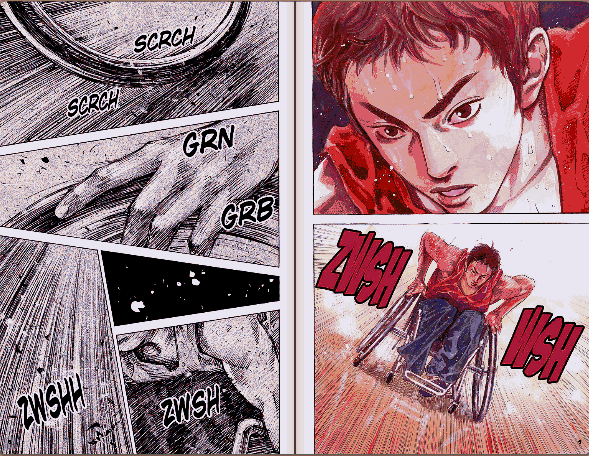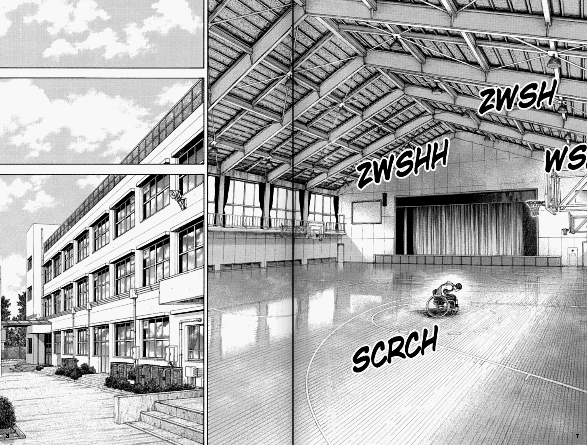 Viz is celebrating will celebrate its 25th anniversary this summer, which is quite an accomplishment. Given how many English-language manga publishers have fallen away over time, you have to give Viz credit for sticking around, no matter how well resourced they may be. They’ve always struck me as grown-ups and professionals, which certainly helps. Beyond that, I appreciate the range of material they’ve published over time and that they continue to try and publish.
Viz is celebrating will celebrate its 25th anniversary this summer, which is quite an accomplishment. Given how many English-language manga publishers have fallen away over time, you have to give Viz credit for sticking around, no matter how well resourced they may be. They’ve always struck me as grown-ups and professionals, which certainly helps. Beyond that, I appreciate the range of material they’ve published over time and that they continue to try and publish.
So, in preparation for the milestone, I thought I’d list 25 of my favorite Viz manga. It’s impressive that it was actually difficult to limit this list to 25, and I ended up having to institute a one-title-per-creator rule to make it possible. Here they are in alphabetical order:
- 20th Century Boys, written and illustrated by Naoki Urasawa: my favorite of Urasawa’s paranoid thriller, because it’s as frisky and funny as it is suspenseful.
- A, A1, written and illustrated by Moto Hagio: dreamy science fiction about people with too many feelings for the universe to contain.
- Benkei in New York, written by Jinpachi Mori, illustrated by Jiro Taniguchi: beautifully drawn (because it’s Taniguchi) and slyly written noir tales of a mysterious Japanese man in the Big Apple.
- Children of the Sea, written and illustrated by Daisuke Igarashi: some of the most viscerally absorbing art I’ve ever seen in a comic used to tell a solid environmental fable.
- Cross Game, written and illustrated by Mitsuru Adachi: simply the bet, funniest, most heartfelt sport manga I’ve ever read.
- The Drifting Classroom, written and illustrated by Kazuo Umezu: an elementary school gets blown into a dangerous wasteland, and everything falls apart in the most gruesome, hilarious ways.
- Even a Monkey Can Draw Manga, written and illustrated by Koji Aihara and Kentaro Takekuma: much more than a parody of instruction manuals, it’s a hilarious take-down of the form itself and the sausage-factory elements that can produce it.
- Fullmetal Alchemist, written and illustrated by Hiromu Arakawa: a great shônen adventure series with some of the crispest, most focused storytelling you’re likely to find in this category.
- GoGo Monster, written and illustrated by Taiyo Matsumoto: gorgeous art used in service of an imaginative, emotionally complex story, beautifully packaged for bonus points.
- Hikaru no Go, written by Yumi Hotta, illustrated by Takeshi Obata: the series that will make you ask how a comic about a board game can be so exciting.
- Honey and Clover, written and illustrated by Chica Umino: art-school students give a master class in mono no aware.
- House of Five Leaves, written and illustrated by Natsume Ono: elegant, character-driven examination of a group of kidnappers in Edo era Japan.
- I’ll Give it My All… Tomorrow, written and illustrated by Shunju Aono: one of the few comics about losers trying to make comics that I can truly love, because Aono knows he’s writing about a loser and spares his protagonist virtually nothing.
- Maison Ikkoku, written and illustrated by Rumiko Takahashi: further evidence, as if it was needed, that Takahashi is queen of the well-told situation comedy.
- Nana, written and illustrated by Ai Yazawa: the lives and love of two very different young women who share the same name and an enduring friendship through life’s ups and downs in rock-and-roll Tokyo.
- Oishinbo, written by Tetu Karia, illustrated by Akira Hanasaki: gone too soon, but much appreciated for its food-obsessed tour through Japan’s culinary culture.
- One Piece, written and illustrated by Eiichiro Oda: an absolutely magical blend of high adventure, low comedy, heartbreaking drama, and whatever the hell else Oda feels like throwing into the mix.
- Ôoku: The Inner Chambers, written and illustrated by Fumi Yoshinaga: an engrossing alternate universe where most of the men have died, leaving the survivor to sly, courtly intrigue and surprising emotional brutality.
- Phoenix, written and illustrated by Osamu Tezuka: a sprawling example of Tezuka at his peak.
- Real, written and illustrated by Takehiko Inoue: as smart and sensitive as it is gorgeous and visceral, telling the stories of wheelchair basketball players.
- Sand Chronicles, written and illustrated by Hinako Ashihara: heartfelt melodrama about a girl’s troubled journey from early adolescence to womanhood.
- Saturn Apartments, written and illustrated by Hisae Iwaoka: another example of why I love slice-of-life science fiction with down-to-earth people in out-of-this-world circumstances.
- Secret Comics Japan, written and illustrated by various artists: long before Ax came this wooly and marvelous collection of alternative manga shorts.
- Sexy Voice and Robo, written and illustrated by Iou Kuroda: a nosy girl drags a hapless guy into her sometimes-perilous odd jobs snooping for a retired mobster, offering great variety of tones but consistently sharp observations about human nature.
- Uzumaki, written and illustrated by Junji Ito: because you always love your first Ito manga best, and this one is an excellent representation of his horrifying work. Of course, if Viz had published Tomie first…
What are your favorite Viz series? If you’d rather post a similar list at your own blog, I’d love to read it (and link to it). Otherwise, let loose in the comments.













 Slam Dunk may have been the series that put Takehiko Inoue on the map and introduced legions of Japanese kids to basketball, but for me, a long-time hoops fan who grew up watching Larry Bird lead the Celtics to numerous NBA champtionships, Slam Dunk was a disappointment, a shonen sports comedy whose goofy hero desperately needed a summer at Robert Parrish Basketball Camp for schooling in the basics. Real, on the other hand, offered this armchair point guard something new: a window into the fiercely competitive world of wheelchair basketball. Watching Inoue’s characters run a man-to-man defense and shoot three-pointers from their chairs gave me a fresh appreciation for just how much strength, stamina, and smarts it takes to play the game, with or without the use of ones’ legs.
Slam Dunk may have been the series that put Takehiko Inoue on the map and introduced legions of Japanese kids to basketball, but for me, a long-time hoops fan who grew up watching Larry Bird lead the Celtics to numerous NBA champtionships, Slam Dunk was a disappointment, a shonen sports comedy whose goofy hero desperately needed a summer at Robert Parrish Basketball Camp for schooling in the basics. Real, on the other hand, offered this armchair point guard something new: a window into the fiercely competitive world of wheelchair basketball. Watching Inoue’s characters run a man-to-man defense and shoot three-pointers from their chairs gave me a fresh appreciation for just how much strength, stamina, and smarts it takes to play the game, with or without the use of ones’ legs.


